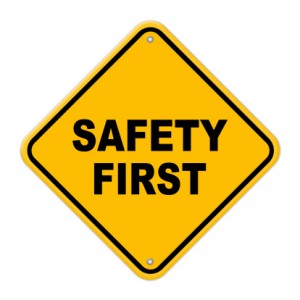How We Developed Our Safety-Focused Culture
 Creating a culture of safety doesn’t happen instantly; it’s something that takes time, constant investment, and personal involvement from every employee.
Creating a culture of safety doesn’t happen instantly; it’s something that takes time, constant investment, and personal involvement from every employee.
Glenn Neal, machine and assembly shop manager at GIW Industries, Inc., has been around long enough to see the focus on safety really evolve at GIW. “Over the last 10-15 years we’ve been changing the culture here,” he says. “Everything we do now at GIW is related to safety.”
Culture shift
This change didn’t happen overnight. In the manufacturing industry, where the mantra “faster is better” has been the long-time norm, convincing everyone to put safety first took some time.
“We’ve changed from the old-school way, which is just hurry up and get the job done, to making sure we’re doing things the safest and most efficient way,” Neal says. “We went from people laughing at us for painting the floor to people asking us when we’re going to paint their floors … these changes take years.”
Many of these changes at GIW came from introducing “behavioral safety” techniques — a term that wasn’t commonplace when GIW began its shift to a safety-first culture.
“We implemented behavioral-based safety — which we’d been doing for years, but we’ve just recently started calling it that,” he explains. “Basically, we work smarter and not harder.”
Safety doesn’t happen by accident
The challenge with this approach — as with any culture change in the workplace — is getting full buy-in from employees and management. As Neal notes, a safe work environment doesn’t happen by accident; it takes a lot of focus and education to get everyone on the same page. He identifies six steps GIW takes to implement new safety rules:
- Identify the problem.
- Get a group of key stakeholders to develop a solution.
- Develop and conduct interactive training to inform everyone about the new process.
- Evaluate the response after training to ensure everyone understands it.
- Review to make sure the new process is happening consistently and correctly.
- Make changes and continue to audit the solution, and then train and retrain everyone accordingly.
A big part of helping new rules stick is through regular training. Training starts the moment an employee walks in the door, and continues throughout his or her tenure with GIW.
For example, one of the first topics new employees in the machine and assembly shops learn about is forklift safety. As Neal mentions, this training is honest and intensive — and, he jests, maybe even a little frightening. “[The trainer] has been here a long time and he’s seen a lot,” Neal says. “He just wants everyone to be careful and understand there are things here that can kill or injure you or others.”
Personal responsibility for safety
This may sound intense, but it’s effective. The result is that every employee knows he or she has a personal responsibility for safe operations on a daily basis.
It’s this personal involvement that that makes GIW such an excellent and safe place to work.
“People here know not to take shortcuts and jeopardize safety,” he says. “We always think about whether it’s the best and safest way to do it — when you do it safer, you minimize the risk of anyone getting hurt or equipment getting damaged.”
Not only does everyone at GIW follow the safety rules, but they also make them. This is a huge source of pride for Neal, who has seen many changes come about thanks to observant workers in the machine and assembly shops.
“Everybody has good ideas and really cares,” Neal says. “Our guys are always on the lookout. They say, ‘There’s a better way to do this,’ and then we take those better ways and turn it into best practice.”
Thanks to you, GIW’s shops are clean, organized, and, most importantly, safe places to work for everyone. Keep up the good work!

